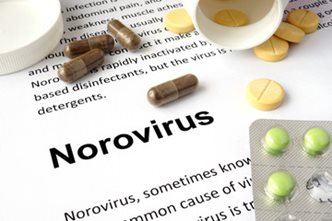
Management of Norovirus Gastroenteritis in Healthcare Settings
Norovirus is the predominant cause of acute gastroenteritis, causing both sporadic cases and outbreaks. It is estimated to be the causative agent for over 23 million gastroenteritis cases occurring every year in the U.S. Norovirus gastroenteritis infections commonly occur in healthcare settings. In fact, healthcare institutions, such as hospitals and nursing homes, are the most frequently reported settings for norovirus outbreaks in the United States and other industrialized countries. Due to the high rates of infection, as well as the burden placed on healthcare institutions in caring for ill patients, infection prevention and control of norovirus is extremely important.
This instructional course has been designed primarily for nurses and infection prevention and control practitioners working and caring for patients in healthcare settings. However, other care providers such as epidemiologists, healthcare administrators, environmental services, and other healthcare staff members will find the course information useful. The course is designed to be applicable to all healthcare settings and follows the recommendations of the Centers for Disease Control and Prevention’s latest HICPAC Guideline for the Prevention of Norovirus.
Questions? Check out our FAQs page and How Online IV Certification Works!
Objectives
Upon completion of this course, the participant will be able to:
- Explain when and where norovirus gastroenteritis infections occur.
- List the symptoms of norovirus.
- Explain how noroviruses are transmitted in the healthcare setting.
- Describe the various methods for limiting the spread of norovirus through isolation, cohorting and contact precautions.
- Recognize the importance of proper hand hygiene techniques for the prevention of norovirus infection.
- Describe methods for closing wards and transferring patients during outbreak events.
- Describe why increased environmental cleaning is necessary in norovirus outbreaks.
- Explain useful visitor policies during outbreak situations.
Curriculum
Chapter 1: Introduction: Norovirus in Healthcare Setting
- Viral Gastroenteritis Description
- Norovirus gastroenteritis infections are common in healthcare settings
- Burden to U.S. Healthcare System
- Importance of Infection Control Measures
Chapter 2: About Norovirus: The Basics
- Description
- When and Where Norovirus Gastroenteritis Infections Occur
- Symptoms
- Transmission
- Treatment
- Special Patient Groups
Chapter 3: Applicable Guidelines
- CDC Norovirus Guideline
- 2012 Toolkit
- State Resources
Chapter 4: Limiting the Spread of Norovirus
- Preventing Exposure to Diarrhea and Vomitus
- Isolation: Single Rooms or Cohort Groups
- Personal Protective Equipment
- Duration Times for Isolation and Contact Precautions
- Limiting Patient Movement Within the Facility
Chapter 5: Staff Management
- Staff Risk of Infection
- Ill Staff Exclusion From Work
- Recovering Staff Suitable for Caring for Symptomatic Patients
- Non-essential Staff, Students, and Volunteers
Chapter 6: The Importance of Hand Hygiene
- Promotion of Proper Hand Hygiene Practices
- Use of Soap and Running Water
- Hand Sanitizers
- Other Hand Hygiene Indications
Chapter 7: Closures and Transfers
- Closures
- Transfers
- Discharges to Home Settings
Chapter 8: Food Handlers in Healthcare
- Food and Water as Source of Norovirus Transmission
- Food Handler Hand Hygiene
- Exclusion of Food Handlers Experiencing Gastrointestinal Symptoms
- Shared or Communal Foods
Chapter 9: Diagnostic Testing for Norovirus
- Laboratory Diagnostic Protocols
- Specimens Used for Testing
- Kaplan's Clinical and Epidemiological Criteria
Chapter 10: Environmental Cleaning
- Need for Increased Cleaning During Norovirus Outbreaks
- Cleaning Sequence
- Disposable and Non-disposable Items
- Linens, Fabrics, Upholstered Items, Rugs
- Products for Cleaning and Disinfection
Chapter 11: Visitor Policies
- Visitor Restrictions
- Screening
Chapter 12: Surveillance, Communication, Training, and Regulatory Notification
- Surveillance to Evaluate Fluctuations in Norovirus Incidence
- Internal Facility Communication
- Training
- Regulatory Notification
- California Bill 241
- Implicit Bias in Healthcare
- What is Implicit Bias?
- Implications of Implicit Bias in Healthcare
- How to Reduce Implicit Bias
Price: $24.00
Contact Hours: 2

Course Author

Maureen Sullivan-Tevault
Maureen graduated nursing school in 1981 and has spent her years in the Emergency and Trauma field, including nursing positions as the Emergency Department Manager, Director of Staff Education, Trauma Coordinator, Cardiology Nurse Navigator, and Stroke Program Manager.
Read Full BioCourse Accreditation
All states recognize our courses for accredited continuing nursing education, CNE, contact hours. This course is accredited by the following boards:
Provider approved by the California Board of Registered Nursing, Provider # CEP 15467.
Provider approved by the Arkansas, District of Columbia, Florida, Georgia, Kentucky, New Mexico, South Carolina, and West Virginia Boards of Nursing through CE Broker, CE Provider #: 50-13256.
Provider approved by the Florida Council of Dietetics and Nutrition through CE Broker, CE Provider #: 50-13256.